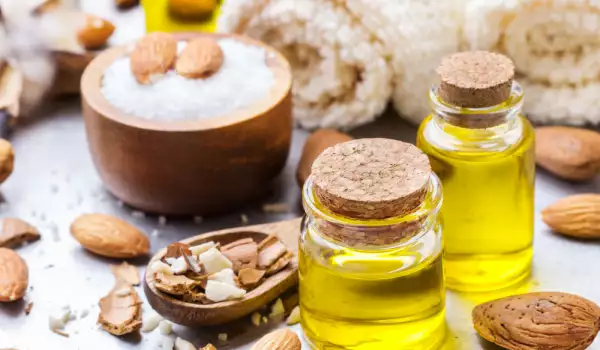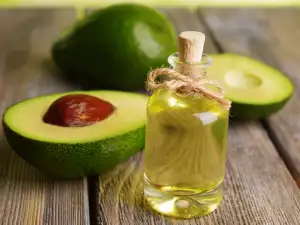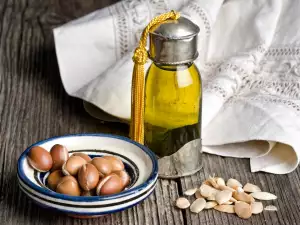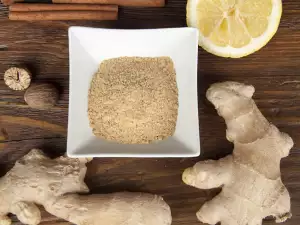In the past, rich people used almonds to treat various diseases because of their strong antioxidant properties. Back then, the almond earned the term royal and is still known as such. The name royal nut is well deserved, because of the fiber, healthy fats, phytochemicals, vitamins and minerals that make it a true nutritional miracle.
This nut crop, native to the Middle East, is the oldest and most widespread food temptation, because people long ago discovered the enormous benefits of almonds for health, beauty, nutritional diversity.
In the Middle East, it was found that the oil extracted from the seeds was very valuable. Almost half of the weight of the dry almond is oil and its production is the result of minimal heat treatment. Here's how to make almond oil.
Obtaining almond oil and types of almond oil
It should be clarified that almonds are the fruits of the tree with the Latin name Ptunus dulcis and despite the name nuts, they are actually a seed in the center of the almond fruit.
The product almond oil can be obtained from the peeled dried almonds simply by pressing them. It is unrefined and retains its nutrients.
It can also be obtained by heating and chemically treating crude oil. Refined almond oil is more heat resistant but contains fewer nutrients.
There are two types of almond oil - sweet and bitter. Bitter can be toxic and is used medicinally. Sweet almond oil is used in cosmetics and cooking and is valuable for the nutrients it contains.
Composition and nutritional value of almond oil
Four are the most important nutrients in the sweet almond oil - vitamin A, vitamin E, omega-3 fatty acids and zinc, each with its own benefits for the body.
Nutritional value of 1 tbsp. almond oil:
- 119 calories;
- 13.5 grams of fat;
- 1.1 grams of saturated fat;
- 9.4 grams of monounsaturated fats;
- 2.3 grams of polyunsaturated fats;
- 35.9 grams of phytosterols;
- 26 percent of the daily dose of vitamin E.
Selenium, zinc, iron, calcium, carbohydrates and other minerals are impressive in its content.
Health benefits of almond oil

1. Monounsaturated fats lower cholesterol and strengthen blood vessels and heart health. It has excellent antioxidant properties and is a very good choice for diabetics and heart patients;
2. Protects cells from free radicals, due to the content of vitamin E;
3. Strengthens the immune system and strengthens the body's resistance;
4. Improves digestion and reduces weight;
5. Due to the monounsaturated and polyunsaturated fats it contains, almond oil lowers blood sugar in diabetes;
6. Strengthens memory and promotes brain activity thanks to folic acid and omega-3 fatty acids;
7. It has analgesic properties and relieves pain by relaxing the muscles.
Almond oil in cooking
In the kitchen, almond oil is the healthy alternative to other oils. Its taste is light and delicate and can be used as an addition in many dishes. It is commercially available as dark or white almond oil.
The dark oil is made from roasted, peeled almonds and has a more pronounced and intense flavor. The dark version has good taste qualities and is a suitable addition to pancakes and pastries. Light is for baking and cooking.
Light oil is from blanched, peeled almonds.
Almond oil does not contain lactose, gluten, animal proteins, soy or other harmful ingredients and can therefore be part of a vegan diet or a substitute for other oils.
Unrefined almond oil can be the delicious salad dressing, along with vinegar and herbs.
It can be added to pasta as the healthy fat. This type of fat can also be used in combination with almond flour.
How to make almond butter at home?

Unrefined almond butter is expensive, but it can be easily made at home. All you need is a powerful mixer or food processor and almonds.
Method of preparation:
Place 2 cups of almonds in a food processor or blender and blend for 10-12 minutes. The resulting mixture has a thick creamy texture and is very oily and therefore sticks to the sides of the vessel. After scapring it, put it in a deep dish to be flavored as you like.
This can be done with 1 tablespoon of agave nectar or honey or 1/2 teaspoon of Himalayan salt. The choice of flavoring can be between cinnamon, vanilla or chopped almonds can be added. The mixture is stored in a tightly closed jar.
If the flavoring is added before the butter is ready, it will thicken it and make it difficult for the blender. The end result may be undesirable.
Those who like the more pronounced taste of almond butter, they can put the almonds in an oven heated to 120°C for about 10 minutes. This, the butter will have a more intense taste and it will also be ready faster.
Some easy and delicious recipes with almond butter
Almond Milk
2 tablespoons of ready-made almond butter can be made into a glass of milk if the butter is beaten into a glass of filtered water.
Almond Shake
If banana, cocoa, coconut or other preferred ingredient is added to almond milk, an excellent shake can be prepared in just 1-2 minutes.
Almond Butter Sandwiches
Slices of whole wheat bread are spread with almond butter and a grapefruit wedge is placed on top.
A variation on peanut butter cookies can be made by spreading the cookies with almond butter and placing a suitable fruit or vegetable of choice. For example, a cookie with almond butter and a piece of apple or celery.
Almond Oil Brownies
Products required:
- A glass of 250 milliliters with almond oil
- Half a cup of brown sugar
- 3 tablespoons of maple syrup
- 2 eggs
- 1/3 cup cocoa
- Half a teaspoon of bakingsoda
- A quarter cup of chopped chocolate
- A pinch of salt
Topping products:
- 2 tablespoons of chocolate chips
- Half a teaspoon of coconut oil
- Himalayan salt by taste
Preparation:
In a deep bowl, mix the almond oil, sugar, maple syrup, eggs and mix well. Add the coconut oil, cocoa, baking soda and salt. Next up are the chocolate chips. The entire mixture is poured into a baking pan lined with baking paper and baked in a 180°C oven for about 20 minutes. The finished brownie is left to cool.
The topping is made by dissolving the chocolate chips in a water bath and adding the coconut oil. Drizzle the brownie with this topping and sprinkle with Himalayan salt crystals.
Storing almond oil
Sealed almond oil can be stored at room temperature for months. When opened, keep it in the refrigerator and can be kept for 3 to 6 months. The natural one has a shorter shelf life.
Contraindications for the consumption of almond oil
Almonds are tree nuts and allergies to them are quite common. If you have a proven allergy to another type of tree nut, you should avoid consuming almond oil or butter.
If you have a proven allergy to peanut butter, you should also be careful with almond oil, never mind that peanuts are a legume, not a tree nut. About 30 percent of those allergic to peanuts are also allergic to almonds.
Almond oil should also be avoided in case of kidney problems, because almonds are rich in oxalates and kidney stones can occur with frequent consumption of this oil.
But those of us who don't mind eating almonds can indulge in the occasional Crunchy Almond Sweets or Slice of Almond Cake.


















Comments